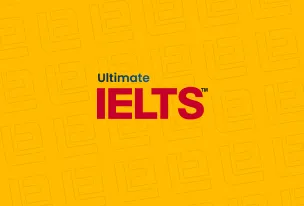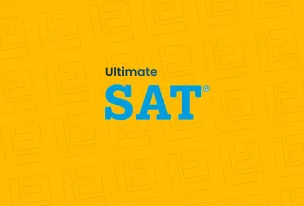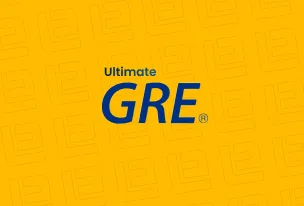You must have created a lot of lists if you’ve applied for scholarships or enrolled in foreign universities. The budget for your stay there is one crucial element that should not be forgotten. What else does this entail besides the cost of tuition and living expenses? Here are 5 seemingly unimportant, but actually very significant, costs that are frequently disregarded.
Supporting Equipment For College, Including a Computer
It’s usually not required to spend a lot of money on supporting equipment for some theoretical courses. However, it’s important to create a list of precise costs for the essential equipment for those who select practical courses like culinary arts, design, or others. It’s crucial to find out from the campus staff what supplies the students need and what is already on hand.
Even though some institutions offer free computer access, owning a personal computer is still crucial. You might occasionally need to complete projects at home. Therefore, even though there are free computer facilities on campus, don’t undervalue the value of owning a personal computer.
College Textbooks

While studying abroad can be an exciting and rewarding experience, the expenditures are frequently substantially greater than when studying at home. The price of textbooks is one cost to take into account. In this piece, we’ll talk about how much a textbook will cost you when you’re studying abroad and how you might cut expenditures.
- Estimated textbook expenses when studying abroad: Depending on the course load and program of study, textbook expenses can change. In other instances, students might have to pay more money for books written by original writers since they are unavailable in their own country. The cost of textbooks when studying abroad is often between a few hundred and a few thousand rupiah every semester or academic year.
- There are a number of strategies to reduce the expense of textbooks while studying abroad. Find books that are still in good shape that are used or that you can borrow from the university library first. Second, consider buying e-books, which can be read anywhere using a laptop or tablet and may be less expensive than traditional books. Finally, don’t be afraid to inquire about discounts or special offers from nearby bookstores or online retailers.
Buying textbooks while studying abroad can be expensive, however there are ways to cut costs here. You can lower textbook expenses and divert money to other more crucial budget items by conducting thorough research ahead, looking for used or electronic books, and taking advantage of discounts or special promotions.
Printing Costs

Well, this is something that students—domestically and internationally—cannot be divorced from. Learning resources in soft file format must be familiar to international pupils. Each university sets its own price for the printing, which they must do themselves. Students there typically have their own printer in their home because they frequently need to print materials and other necessities for school. You can use this strategy to reduce your spending.
Depending on the destination nation and university you select, printing expenses can change while you are studying abroad. The price of paper, ink, and printing supplies may fluctuate over time, affecting these costs as well. For overseas students, the approximate cost of printing is $50 to $100 per semester. Some colleges also provide printing services for a set fee of $30 to $50 every semester.
However, these expenses do not cover the price of buying new supplies like paper and ink or the price of fixing a broken printer. It is crucial that you plan an additional budget to account for any additional printing demands that may arise while you are studying abroad.
Field Trips

One of the crucial activities in higher education is field trips. Students can strengthen their understanding of course subject and increase their knowledge of the outside world through field visits. Field trips, however, can be an even more fun and worthwhile experience when studying abroad. We’ll talk about the advantages and expenses of study abroad field trips in this article.
Benefits of Studying Abroad Field Trips:
Field trips can offer learning opportunities that are not possible in a traditional classroom setting. Leading institutions, organizations, or businesses in their field of study can be visited by students. Additionally, through witnessing the way of life, working procedures, and culture of the society and industries in that nation, students can also obtain learning experiences.
Studying abroad field trips provide educational advantages, but they can also improve students’ social skills:
Students can broaden their networks and create ties that will be helpful to them in the future through field trips. Students can also develop their communication skills and learn how to collaborate in teams.
Study Abroad Field Trip prices:
Depending on the destination nation, travel distance, trip length, and activity type, field trip prices might vary significantly. However, these expenses typically cover travel, lodging, meals, tickets to tourist attractions, and administrative charges. It should be emphasized that extra costs like personal spending and insurance are not included in these costs.
There are various ways to lower the expense of study abroad field trips, including looking for sponsors or grants, picking an efficient trip, or splitting costs with friends. In order to lower the expense of field excursions, students can also inquire for grants or other forms of aid from their schools or local governments.
Field visits for students who are studying abroad are crucial and advantageous. Although field trips can be expensive, the advantages of improving students’ knowledge and interpersonal skills cannot be quantified in terms of money. Therefore, it is crucial for students to plan an adequate budget and identify strategies for lowering field trip expenses without sacrificing the value of the educational experience.
Internship Costs

Students studying abroad gain significant benefits from internships and apprenticeships, which provide valuable work experience and professional connections. However, internships can be costly, with expenses including travel, lodging, meals, and other related costs. Some businesses may offer unpaid internships or provide a salary or allowance.
When considering an internship abroad, students should evaluate the costs and explore financial options such as internship scholarships, study abroad grants, and student loans. Many organizations offer scholarships that cover salaries, housing, and travel expenses.
Students can also seek information on scholarships from their universities or study abroad websites. Additionally, student loans can help fund international internships, but students should carefully assess their ability to repay the debt after graduation.
For field trips or study tours, costs vary based on location and duration, typically covering transportation, lodging, meals, and entry fees.
When preparing for the expenses of studying abroad, make sure to also prepare yourself well to adapt to a new culture and environment. Want to start preparing for studying abroad? Don’t forget to prepare for your IELTS/TOEFL/GMAT/SAT tests at Ultimate Education. You can check out more information about Ultimate Education.
MEXT Scholarships

The Japanese government offers MEXT scholarships to those who wish to study S1 and S2 studies in Japan. You don’t need to speak Japanese fluently to apply for this scholarship, but you do need to have a basic comprehension of the language. Undergraduate (Gakubu), Specialized Training College (Senshu), and College of Technology scholarships are the three categories of financial aid offered by MEXT. The study topics and lengths vary for each program.
Conditions for MEXT Scholarships
- completed a formal educational program, like high school.
- Not older than 24 at the time of application.
- Visit www.id.emb-japan.go.jp/sch_kosen2022/ to view the particular requirements for each program
Benefits of MEXT Scholarship:
- covering of all tuition costs, including those for preparatory education.
- A monthly living stipend of around Rp15,652,560 or?117,000.
- airfare for a flight between Indonesia and Japan.
- exemption from fees associated with student visas.
- Service is not required.
Mitsui Bussan Support
The Mitsui Bussan scholarship is available to high school students who want to continue their education in Japan. It lasts for five years and five months, with 1.5 years allotted for Japanese language classes and the remaining four years for higher study. Scholarship recipients will receive language instruction at the Tokyo Japanese Language Education Center of the Japan Student Services Organization.
How to Apply for Mitsui Bussan Scholarships:
- identity as an Indonesian national.
- applicants who are under twenty.
- being single and willing to stay that way for the duration of the scholarship.
- possess a high school diploma or the equivalent, with a scientific or social studies emphasis.
- willing to study Japanese and apply to Japanese universities.healthy both physically and mentally, free of infectious diseases.
Bussan Mitsui Scholarship:
- Application for scholarships is free.
- A monthly living allowance of around Rp18 million (145,000 yen).
- flight from Indonesia to Japan in economy class for the duration of the scholarship.
- You will be given a 50,000 yen (around Rp6 million) arrival allowance when you arrive in Japan.
- There are no tuition costs; enrollment and Japanese language classes are free.
ORANGE Tulip Scholarships
Through Nuffic Neso Indonesia, which works with the top 25 universities in the nation, students who wish to pursue undergraduate and graduate studies in the Netherlands may be eligible to earn scholarships from the Dutch government. Before submitting an application, make sure your college is listed as a partner of the Orange Tulip Scholarship program.
Conditions to Apply for Orange Tulip Scholarships:
- Candidates must be Indonesian citizens.
- Not presently employed or enrolled in school in the Netherlands.
- in the process of applying to or having been admitted to one of the colleges that collaborate with the Orange Tulip Scholarship program.
- comply with the Orange Tulip Scholarship Program’s unique requirements.
Recipients of the Orange Tulip Scholarships:
- From thirty to one hundred percent of tuition fees waived until graduation.
Scholarships From IFA Paris
Do you aspire to become one of the world’s top designers? IFA Paris provides financial aid to first- and second-year students. Visual Merchandising, Fashion Marketing, and Fashion Sustainability are all included in the Bachelor’s curriculum.
Scholarships from the IFA in Paris:
- full covering of tuition costs.
- Excellence Scholarship, with no application cap and a 40% tuition fee discount.
- Distinction Scholarship, with no application cap and a 20% tuition fee reduction.
IFA Paris Scholarship requirements:
- the equivalent of a high school diploma.
- Minimum age is sixteen.
- IELTS 5.5 or TOEFL 65 as a minimum.
- enthusiasm for fashion design or for the marketing and commerce of fashion.
- Candidates for the Bachelor of Fashion Design & Technology and Bachelor of Fashion Sustainability with Design Major must submit a portfolio.
- Pay the application cost of 150 Euros.
- able to participate in a selection interview via Skype or on-campus.
- Complete the application form and attach any documents that have been professionally translated into English.
To prepare for your IELTS or TOEFL scores, Ultimate Education is always ready to assist you. You can also visit our website or contact us through WhatsApp by clicking the following link.
Scholarships at KAIST
The ginseng-producing nation of Korea is a fantastic location for technical studies. The Korea Advanced Institute of Science and Technology (KAIST), one of the top technology universities, has produced successful graduates such Rim Ji Hoon, the creator of Kakao Talk, and Hae Jin Lee, the creator of LINE. If you wish to be like them, applying for S1 scholarships at KAIST can be a wise decision.
Scholarships at KAIST:
- For eight semesters, there are no fees.
- $300 per month in living expenses, or around Rp4.3 million.
- insurance for health care.
Qualifications for KAIST Scholarships:
- worldwide applicants, including those from Indonesia.
- Will/have completed high school before August 31, 2022, and be prepared to enroll in classes that fall.
- Obtain the minimum TOEFL iBT score of 83, the TOEFL PBT score of 63, the TOEFL CBT score of 220, the IELTS score of 6.5, the TOEIC Listening and Reading score of 720, and the TEPS score of 326 to satisfy the English language requirements.
- Students who have completed English-medium education do not require any documentation proving their proficiency in the language.
Bursaries from Turkiye
The Turkish government provides full scholarships to deserving Indonesian students. The Turkiye Burslari Scholarship enables students to continue their studies in grades S1, S2, and S3. Twelve colleges are chosen each year to receive this grant. Based on their rankings, the selection algorithm will select participants’ universities.
Scholarships offered by Turkiye Burslari:
- placement in educational programs and institutions.
- A monthly allowance of roughly 800 TL, or 1.5 million rupiahs.
- educational costs.
- flight back to the country of origin after completing studies, round trip.
- health protection.
- Accommodation.
- Turkish language classes for a year.
Turkiye Burslari Scholarship Requirements:
- Obtain the required minimum grade point averages: for S1 programs, this should be 70%, for S2 and S3 programs, 75%, and for programs in the health sciences (medicine, dentistry, and pharmacy), 90%.
- meet the age restrictions of under 21 years old for the S1 program, under 30 years old for the S2 program, and under 35 years old for the S3 program.
- All participants are welcome, with the exception of those who are citizens of Turkey or have lost their citizenship.
- not own a university degree from Turkey.
K-ARTS Support

Many well-known artists, including actors, singers, musicians, and actresses, are from South Korea. With the Art Major Asian Plus (AMA+) scholarship, you have the chance to pursue a career in the arts at the Korea National University of Arts. This university offers a wide variety of majors, such as vocal music, instrumental music, acting, directing, interior design, theater studies, film production, broadcasting, multimedia, animation, and dance performance, among others.
Awards from K-ARTS:
- Flight to South Korea for departure and graduation in economy class.
- Allowance of 800,000 KRW (about Rp10,134,811) every month.
- four months of intensive Korean language instruction prior to the commencement of sessions.
- Complete tuition help (only for normal semesters).
- health insurance with restricted coverage.
K-ARTS Scholarship requirements:
- The OECD DAC Development Assistance Committee enrolled individuals from low- and middle-income countries.
- completed a bachelor’s degree program or a high school equivalent before enrolling in K’ARTS.
- Participants must adhere to each department’s Korean language standards.
- Participants are required to submit a portfolio detailing their skills and qualities that align with the demands of each department.
- Before beginning the study program, accepted K-ARTS participants are anticipated to arrive in Korea and take Korean language classes. Prior to coming, they must possess a TOPIK level 6 certificate.
Brunei Darussalam Government Scholarships
Government Scholarships from Brunei Darussalam are an alternative for students who choose to further their education on-campus. Similar to Turkiye Burslari, the government of Brunei Darussalam provides this scholarship to S1 and S2 students each year. The five campuses that are accessible are Universiti Brunei Darussalam, Kolej Universiti Perguruan Ugama Seri Begawan, Universiti Islam Sultan Sharif Ali, Universiti Teknologi Brunei, and Politeknik Brunei.
The following is a list of scholarships offered by the Brunei Darussalam government:
- The tuition charge includes the cost of admission, testing, registration, and orientation.
- fly between Indonesia and Brunei Darussalam in economy class for travel during the start and end of school.
- Maximum luggage charge for private flights is BND$250 (about Rp2.6 million).
- As a personal allowance, BND$500 per month (about Rp5.3 million) is given.
- The lunch allowance is BND 150 per month (about Rp 1.6 million).
- 150 BND (or 6.4 million rupiahs) in annual book allowance.
- Dorm accommodations at a university or a polytechnic grant.
- comprehensive health coverage throughout the duration of the scholarship.
Qualifications for scholarships offered by the government of Brunei Darussalam:
- One of the ASEAN members is Indonesia.
- Maximum age of 35 years (S2) and minimum age of 18 to 25 years (S1).
- Obtain a recommendation from the applicant’s region’s education office or the ministry of culture and education.
- cannot accept any help without the blessing of Brunei Darussalam’s Ministry of Foreign Affairs.
- Family members are not allowed to attend the scholarship.
- Work is not permitted while a student in Brunei Darussalam.
- must finish their studies and then return home.
Stipendium Hungaricum
The cost of living in Hungary is quite low. Indonesian students who decide to attend school in Hungary are given full scholarships by the Hungarian government. You are free to continue your education in your home country after graduating. Hungary is a safe country, therefore there is no reason for you to be concerned.
Coverage of Stipendium Hungaricum:
- full postgraduate studies costs and tuition.
- HUF 43,700 a month, or about Rp2 million, is provided as a living allowance.
- Free housing options include dorms or a HUF 40,000 (or Rp 1.7 million) per month housing grant.
- No-cost health insurance.
- Free foreign language instruction in Hungarian.
In order to receive Stipendium Hungaricum, you must:
- International students are recommended by educational institutes in each nation (Ristekdikti for Indonesia).
- not enrolled in an S1 program if a bachelor’s degree has already been earned.
- over the age of 18.
- satisfies the prerequisites for admission to universities in Hungary.
Canada’s University of Toronto offers scholarships.
Canada’s top campus, the University of Toronto, is ranked 25th globally. If you want to go there to study without having to worry about housing, you can apply for the Lester B. Pearson International scholarship. There are almost 700 S1 programs, including courses in forensics, journalism, computer science, literature, and environmental science.
Scholarship recipients from the University of Toronto, Canada, listed:
- All study-related tuition payments were paid in full.
- Grants to cover textbook costs.
- Unexpected financial resources.
- Allowance for four years of residence in Canada.
The University of Toronto in Canada has the following requirements for scholarship recipients:
- Students that are eligible for a study visa in Canada from all over the world, including Indonesia.
- either in their final high school semester or planning to graduate after June 2021.
- possess English language ability that satisfies the University of Toronto’s criteria, which are a minimum IELTS score of 6.5 or a TOEFL iBT total score of 100 (with a minimum writing score of 22 points), or an equivalent.
- prepared to enroll at the University of Toronto.
- submitting no applications to other universities.
- As a component in evaluating academic achievement, authorities recommend.





